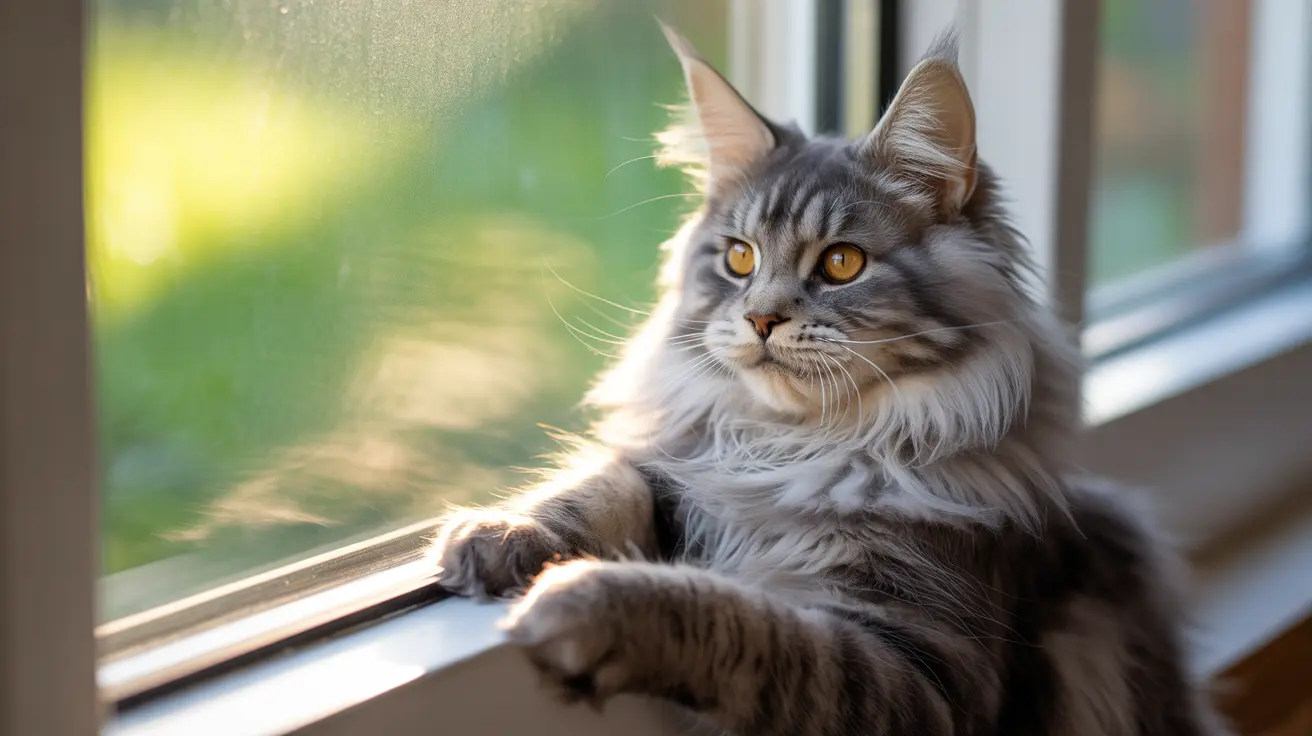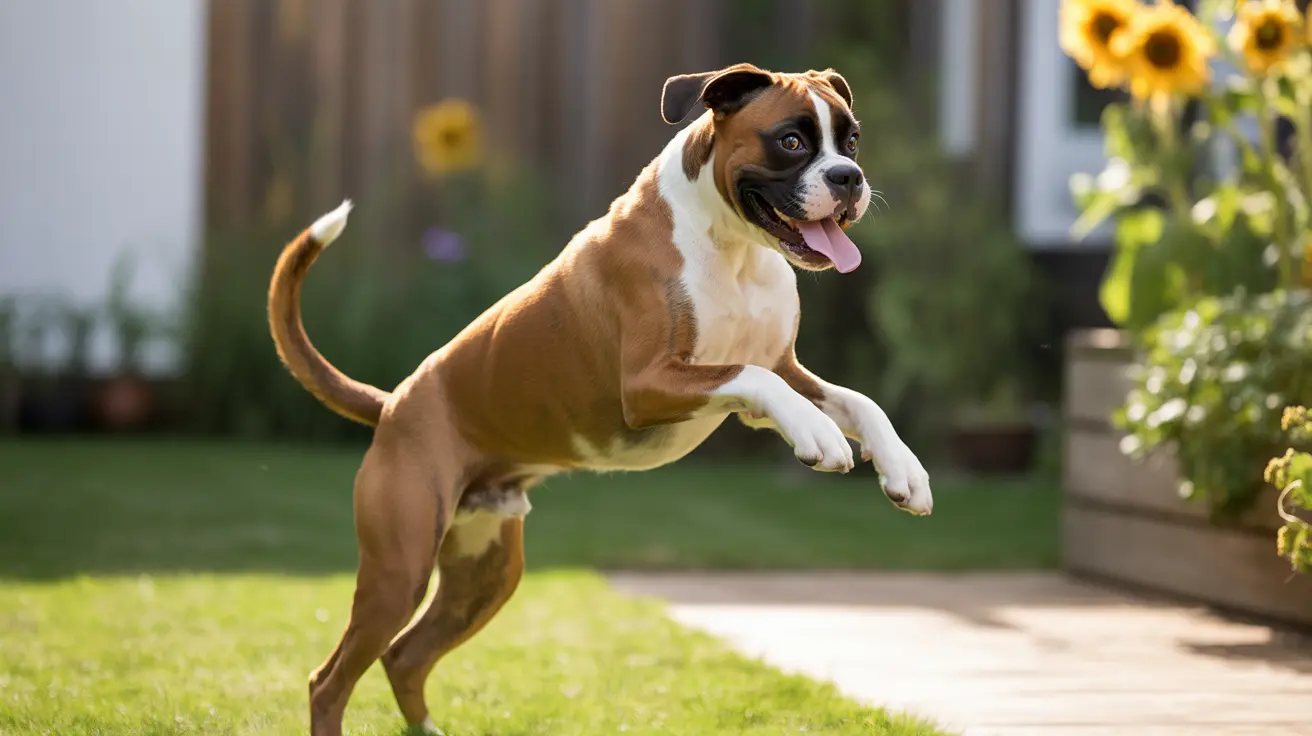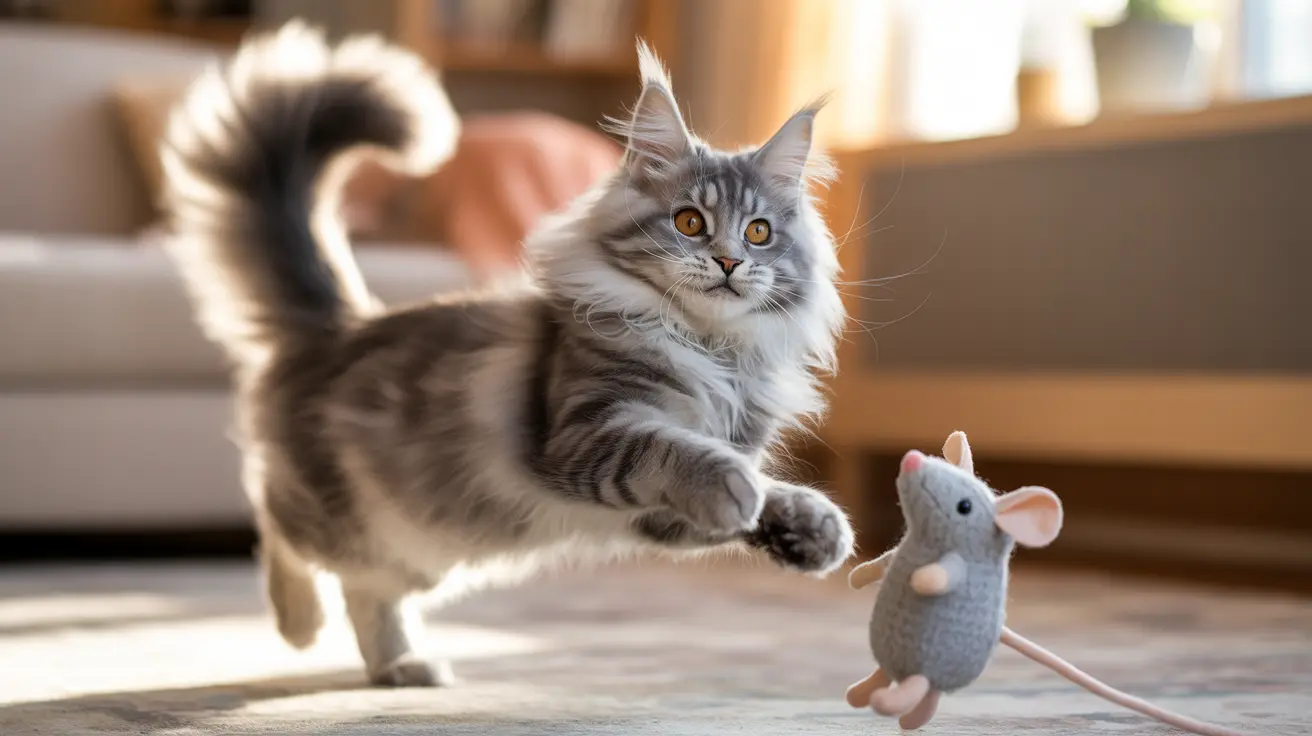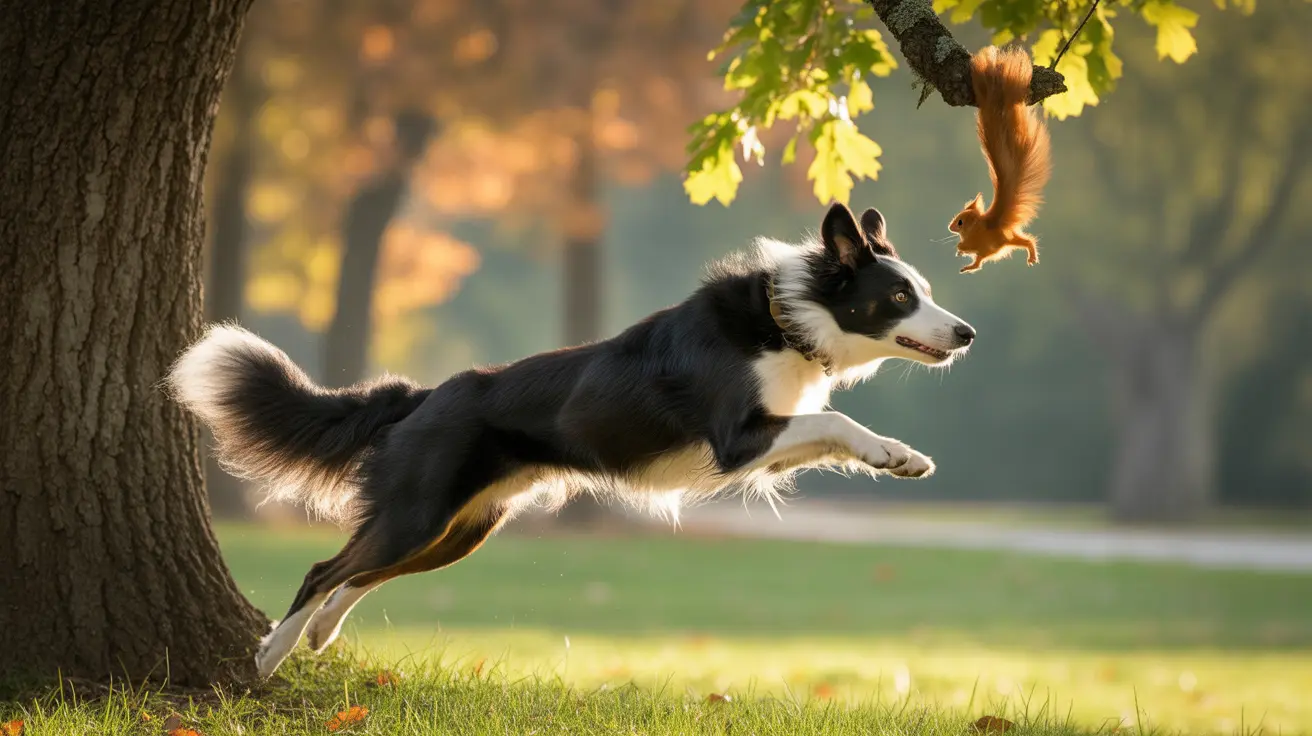Preventing Cat Falls from Windows and Balconies: Essential Safety Guide for Cat Owners
Every year, countless cats suffer serious injuries from falls in their own homes, with many incidents occurring from windows, balconies, and indoor furniture. While cats are renowned for their agility and natural ability to land on their feet, the reality is that falls remain one of the most common causes of injury among domestic cats. Understanding the risks and implementing proper safety measures can mean the difference between a safe, happy cat and a tragic emergency veterinary visit.
This comprehensive guide will explore the science behind why cats fall, the dangers they face, and most importantly, how you can create a secure environment that protects your feline companion from potentially life-threatening accidents. Whether you live in a high-rise apartment or a single-story home, these insights will help you safeguard your cat while preserving their natural curiosity and need for exploration.
Understanding Why Cats Fall: Natural Instincts Meet Modern Hazards
Cats are naturally curious creatures with strong hunting instincts that can override their usual caution. When a bird flies by an open window or a moving object catches their attention on a balcony, their predatory drive can cause them to leap without considering the consequences. This is particularly true for younger cats and kittens, who may not yet have developed the judgment to assess distances and dangers accurately.
Additionally, cats often misjudge their physical capabilities, especially as they age or when they're dealing with health issues that affect their coordination. Indoor cats may be particularly vulnerable because they lack experience with outdoor environments and may not understand the risks associated with heights and open spaces.
The Righting Reflex: Nature's Safety Mechanism Has Limits
The famous "righting reflex" allows cats to twist their bodies mid-air and land feet-first during falls. This remarkable physiological adaptation involves their flexible spine, lack of collarbone, and exceptional balance system in their inner ears. When falling, cats can rotate their head first, followed by their spine and rear legs, typically completing this maneuver within the first few feet of a fall.
However, this natural safety mechanism has significant limitations. Cats need adequate time and distance to complete their righting sequence—typically requiring at least 12 inches of fall distance. Paradoxically, this means that falls from lower heights, such as furniture or low windows, can actually be more dangerous than falls from greater heights because cats don't have sufficient time to orient themselves properly.
Common Causes and High-Risk Situations for Cat Falls
Understanding when and why cats are most likely to fall helps cat owners identify and address potential hazards before accidents occur. Several factors contribute to increased fall risk in domestic cats.
Environmental Triggers
Open windows without secure screens pose one of the greatest risks, especially during warmer months when windows are frequently opened for ventilation. Even a small gap can be dangerous if a cat becomes startled or distracted while perched on a windowsill. Balconies present similar hazards, particularly when railings have wide gaps or when cats attempt to climb or balance on narrow surfaces.
Indoor furniture arrangements can create unexpected fall hazards when tall, unsecured bookshelves or furniture pieces tip over under a cat's weight. Cats naturally seek high vantage points and may attempt to climb or jump to surfaces that cannot safely support them.
Age-Related Risk Factors
Kittens face elevated fall risks due to their developing coordination and poor distance judgment. Their curiosity often exceeds their physical capabilities, leading them to attempt jumps or climbs beyond their abilities. Senior cats also face increased risks as their agility, strength, and sensory capabilities decline with age, making them more prone to miscalculating jumps or losing their footing.
Potential Injuries and Why Every Fall Matters
Cat falls can result in a wide range of injuries, from minor bruises to life-threatening trauma. Understanding these potential consequences underscores the importance of prevention rather than relying on a cat's natural abilities.
Physical Trauma from Falls
Common injuries include fractures to legs, ribs, or the pelvis, which may require extensive surgical repair and lengthy recovery periods. Internal injuries such as bruised or punctured organs can be particularly dangerous because they may not be immediately apparent. Cats are masters at hiding pain and discomfort, often continuing normal behaviors even when seriously injured.
Head trauma represents another serious concern, potentially causing neurological damage or brain injuries that may have lasting effects on a cat's quality of life. Even seemingly minor falls can result in soft tissue injuries or joint damage that may not manifest symptoms until days or weeks later.
The Hidden Nature of Cat Injuries
Recognizing signs of injury after a fall requires careful observation, as cats instinctively conceal weakness or pain. Subtle indicators include reluctance to jump or climb, changes in appetite or drinking habits, difficulty breathing, or alterations in normal behavior patterns. Any visible injuries, limping, or unusual vocalizations warrant immediate veterinary attention.
Creating a Cat-Safe Indoor Environment
Preventing cat falls requires a comprehensive approach to home safety that addresses both obvious hazards and less apparent risks. The key is to think from your cat's perspective and identify potential climbing paths, jumping destinations, and areas of interest that could lead to dangerous situations.
Securing Windows and Openings
Install well-secured screens on all windows, ensuring they fit tightly and show no signs of wear or tears. Traditional screens may not withstand a cat's full weight, so consider reinforced options designed specifically for homes with cats. For windows that are frequently opened, pet-safe window guards provide an additional layer of protection while still allowing airflow.
Check that all window and door latches function properly and close securely. Even a partially open window can present risks if a curious cat manages to squeeze through or becomes trapped while attempting to do so.
Balcony Safety Measures
Cat-proof balconies using barriers such as plexiglass panels, specialized mesh netting, or screen materials designed to prevent cats from slipping through railings or climbing over barriers. These installations should be professionally secured and regularly inspected for wear or damage that could compromise their effectiveness.
Avoid leaving chairs, tables, or other objects near balcony railings that cats might use as stepping stones to reach dangerous areas. Consider the sight lines from your balcony—if your cat can see birds or other attractions that might trigger their hunting instincts, additional precautions may be necessary.
Furniture and Interior Safety
Secure all tall furniture, bookshelves, and entertainment centers to walls using appropriate brackets or anchoring systems. Even furniture that seems stable can become dangerous if a cat uses it as a launching pad or climbing structure. This is particularly important in homes with active cats or multiple pets.
Remove or secure breakable items from surfaces that cats can access. Store glass vases, porcelain decorations, and other fragile objects in enclosed cabinets rather than on open shelves where curious cats might knock them over or be injured by falling debris.
Create safe climbing alternatives by installing cat shelves, cat trees, or wall-mounted perches that satisfy your cat's natural desire for high vantage points without requiring dangerous jumps or climbs.
Installing Specific Safety Infrastructure
Effective cat fall prevention often requires specific safety equipment designed for pet-owning households. Understanding your options helps you make informed decisions about protecting your cat.
Window Guard Options
Pet-specific window guards come in various styles, from adjustable screens that fit within window frames to decorative grilles that attach to the exterior of your home. Choose options that can withstand significant pressure and are constructed from materials that won't harm your cat if they make contact.
For rental properties, look for non-permanent solutions that can be installed without damaging the structure. Many effective window guards use tension mounting systems or removable hardware that won't affect your security deposit.
Balcony Netting and Barriers
Professional-grade balcony netting systems provide comprehensive protection while maintaining your outdoor space's aesthetic appeal. These systems typically involve nearly invisible mesh materials secured with tension cables and mounting hardware designed to withstand weather and cat activity.
When selecting balcony barriers, consider both horizontal and vertical protection—cats are skilled climbers and may attempt to go over or around barriers that only address one direction of movement.
Recognizing and Responding to Fall Injuries
Despite best prevention efforts, accidents can still occur. Knowing how to recognize and respond to potential injuries can be crucial for your cat's recovery and well-being.
Immediate Assessment and First Aid
After any fall, carefully observe your cat for signs of distress or injury without immediately restraining them, as injured cats may react defensively. Look for obvious injuries such as bleeding, visible fractures, or difficulty breathing. If your cat appears alert and is moving normally, continue monitoring for subtle changes in behavior over the following 24-48 hours.
For serious falls or when injuries are apparent, contact your veterinarian immediately. When transporting an injured cat, use a carrier or rigid surface to prevent additional injury during the trip to veterinary care.
Long-term Monitoring for Hidden Injuries
Some fall-related injuries may not become apparent for days or weeks after the incident. Monitor your cat's eating habits, litter box usage, activity levels, and general behavior. Any persistent changes warrant veterinary evaluation, even if they seem minor or unrelated to the fall.
Internal injuries, joint damage, or neurological effects may develop gradually, making ongoing observation essential for ensuring your cat's complete recovery.
Debunking Common Myths About Cat Agility
Many dangerous misconceptions about cats' physical abilities can lead to inadequate safety measures. Understanding the reality behind these myths is essential for proper fall prevention.
The "Nine Lives" Fallacy
While cats are remarkably resilient and agile, they are not immune to serious injury or death from falls. The belief that cats always land on their feet safely can lead to complacency about safety measures. Even when cats do successfully right themselves during a fall, the impact can still cause significant internal injuries or fractures.
Relying on a cat's natural abilities rather than implementing proper safety measures puts your pet at unnecessary risk and may lead to preventable injuries or worse outcomes.
Height and Distance Misconceptions
Another dangerous myth suggests that cats are safer falling from greater heights due to their righting reflex. While cats may have more time to orient themselves during longer falls, the increased impact force can cause more severe injuries. Every fall, regardless of height, presents genuine risks that proper safety measures can help prevent.
Creating Cat-Friendly Vertical Spaces
Rather than trying to suppress your cat's natural climbing instincts, channel them into safe alternatives that satisfy their needs while eliminating dangerous risks.
Strategic Placement of Cat Furniture
Install cat trees, shelves, and perches in locations that provide interesting views and climbing opportunities without creating fall hazards. Position these items away from windows, balconies, and other potentially dangerous areas while still giving your cat the vertical territory they crave.
Consider your cat's age, size, and physical capabilities when selecting and positioning vertical furniture. Senior cats may need lower platforms with easier access, while younger cats might benefit from more challenging climbing opportunities.
Materials and Construction Considerations
Choose cat furniture and climbing structures made from sturdy materials that can support your cat's weight plus the additional force generated by jumping and playing. Regularly inspect these items for signs of wear, loose hardware, or structural damage that could lead to collapse.
Non-slip surfaces on platforms and perches help prevent your cat from losing their footing, while rounded edges reduce injury risks if falls do occur.
Frequently Asked Questions
What should I do immediately after my cat falls?
First, remain calm and allow your cat to compose themselves without forcing interaction. Observe for obvious injuries like bleeding, difficulty breathing, or inability to move normally. If serious injuries are apparent or suspected, contact your veterinarian immediately. Even if your cat seems fine, monitor them closely for 24-48 hours for subtle signs of injury such as changes in appetite, behavior, or movement patterns.
Are indoor cats more at risk for fall injuries than outdoor cats?
Indoor cats may actually face higher risks in some situations because they lack experience assessing outdoor hazards and may not understand the dangers of heights or open spaces. They may also be more likely to react impulsively to outdoor stimuli like birds or moving objects without considering the consequences. However, outdoor cats face entirely different sets of risks, making proper safety measures important for all cats regardless of their lifestyle.
How high does a window or balcony need to be to require safety measures?
Any height that could result in injury warrants safety measures. Even falls from furniture height or first-floor windows can cause serious injuries, particularly if cats land awkwardly or on hard surfaces. The "high-rise syndrome" in veterinary medicine refers to injuries from falls typically above the second story, but cats can be seriously injured from much lower heights as well.
What types of window screens are safe for cats?
Standard window screens are not designed to support a cat's full weight and may give way under pressure. Look for reinforced screens specifically designed for pet households, or consider adding protective barriers like window guards. Ensure all screens fit securely in their frames without gaps and inspect them regularly for damage or wear that could compromise their effectiveness.
Can I train my cat to avoid dangerous areas like windowsills or balcony railings?
While you can discourage cats from certain areas using deterrents or training techniques, it's not safe to rely solely on behavioral modifications for fall prevention. Cats may ignore training when they're excited, scared, or focused on hunting instincts. Physical barriers and safety modifications provide much more reliable protection than training alone.
How do I cat-proof a balcony without permanent modifications?
Several temporary options exist for renters or those who cannot make permanent modifications. These include removable netting systems, temporary barriers that attach with tension mounting, and portable screens that don't require drilling or permanent hardware. Many pet supply companies offer solutions specifically designed for temporary installation.
What are the signs that my cat may have internal injuries after a fall?
Signs of internal injuries can be subtle and may include difficulty breathing, pale gums, lethargy, loss of appetite, hiding behavior, reluctance to move or jump, changes in urination or defecation patterns, or unusual vocalizations. Since cats naturally hide pain and illness, any persistent changes in behavior following a fall should prompt veterinary evaluation.
Conclusion
Preventing cat falls from windows and balconies requires a proactive approach that combines understanding your cat's natural behaviors with implementing appropriate safety measures throughout your home. While cats possess remarkable agility and the instinctive righting reflex, these natural abilities cannot eliminate the serious risks associated with falls from any height.
The investment in proper safety infrastructure—from reinforced window screens and balcony barriers to secured furniture and cat-friendly climbing alternatives—pays dividends in protecting your beloved pet from potentially devastating injuries. Remember that effective fall prevention is not about restricting your cat's natural behaviors, but rather about channeling those instincts into safe outlets while eliminating dangerous hazards. By taking these precautions seriously and maintaining vigilance about potential risks, you can provide your cat with a secure environment that supports their well-being for years to come.






